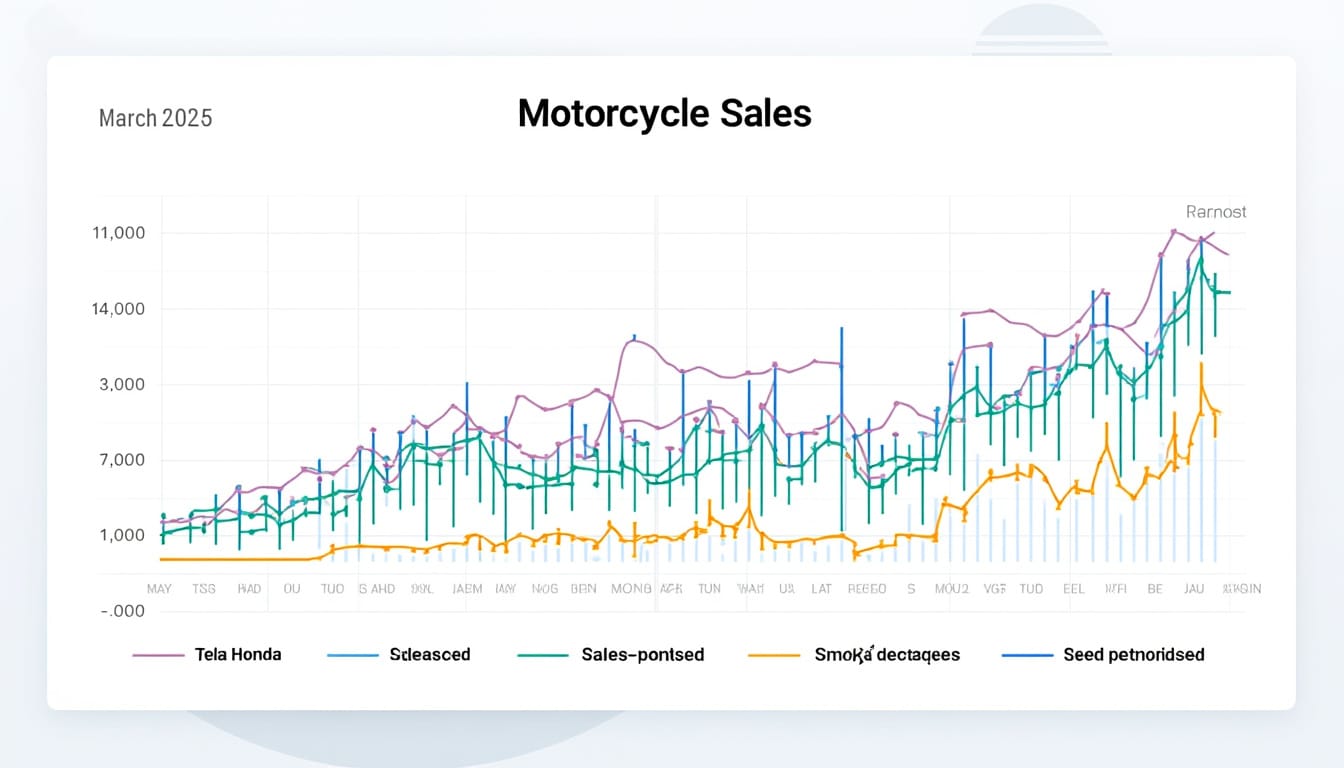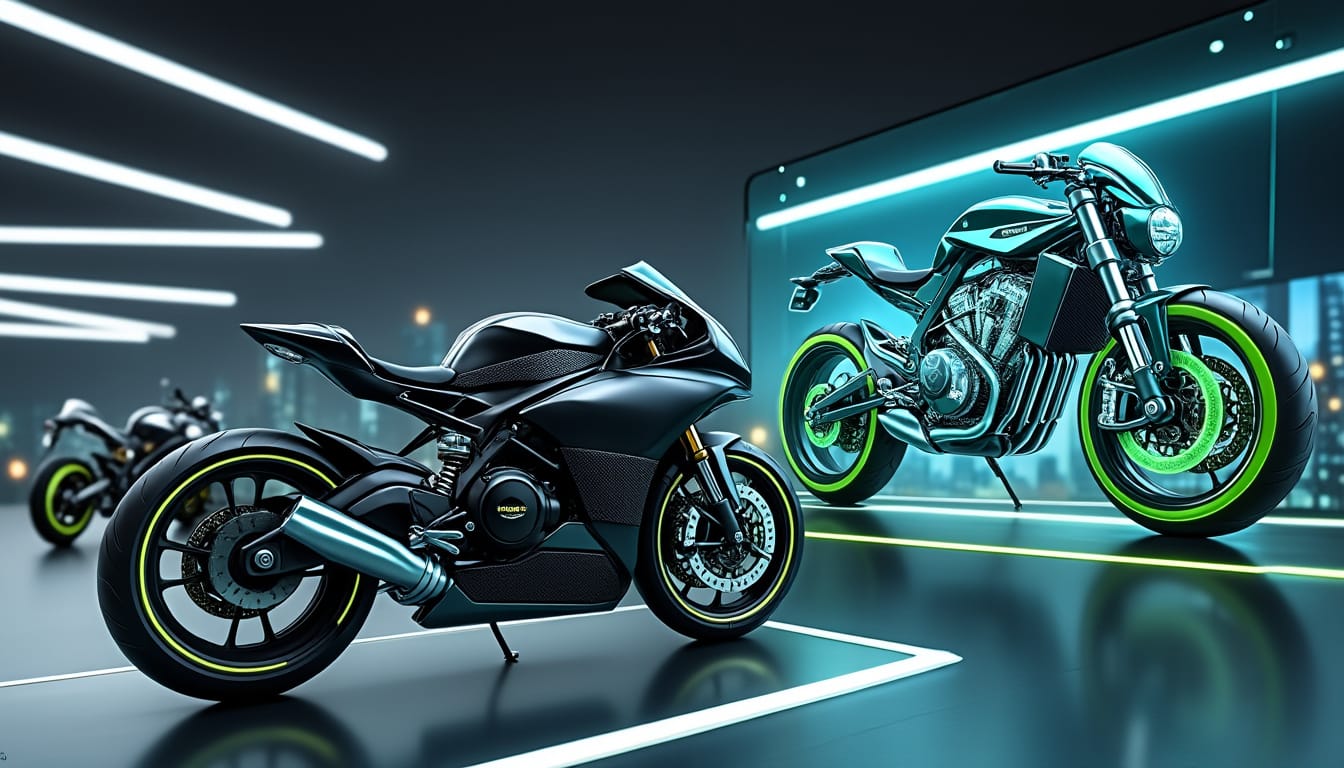Motorcycle and scooter sales in March 2025: a market in turmoil

The performance of the motorcycle market continues to raise questions in March 2025. After a concerning start to the year, the figures revealed this month show a persistent decline. Industry players face an alarming dynamic that calls into question the expectations of growth and recovery. With consumers becoming increasingly reluctant to acquire new models, how does the reality of this once-thriving market unfold?
- The sales trends of motorcycles in March 2025
- The decline of scooters and three-wheeled vehicles
- Analysis of the performance of major manufacturers
- Study of consumer preferences
- The future of the two-wheeler market in France
The sales trends of motorcycles in March 2025
In March 2025, registrations of motorcycles over 125 cm³ reached a total of 16,997 units, marking a decrease of 18.2% compared to March 2024. These figures are not isolated but are part of a larger trend that has been confirmed since the beginning of the year. The first quarter of the year recorded a cumulative decline of 20.4%, highlighting a structural crisis.

Comparison of month-to-month registrations
To better understand this dynamic, let’s observe the month-to-month evolution of registrations since January:
| Month | Registrations | Variation (%) |
|---|---|---|
| January | 9,106 | -15.3% |
| February | 10,889 | -27.1% |
| March | 16,997 | -18.2% |
These data highlight a limited resilience despite a slight increase in sales between February and March, indicating seasonal fluctuations. However, the entire market remains down compared to the previous year.
A crumbling market
The significant decline in motorcycle sales can be explained by several factors. On one hand, the falling interest of consumers in more powerful models is reflected by a decrease in registrations of high-displacement motorcycles. Moreover, the increase in insurance and maintenance costs discourages many potential buyers. Young people, in particular, seem to be turning away from these vehicles in favor of more economical and environmentally friendly options.
The rise of environmental concerns and new regulations aimed at reducing emissions from internal combustion engine vehicles also contributes to buyer hesitation. The electric motorcycle segment, although growing, has not yet compensated for the significant deficit recorded in traditional model sales.
The decline of scooters and three-wheeled vehicles
The situation for scooters and three-wheeled vehicles is equally concerning. In March 2025, the scooter and three-wheeler market registered only 4,183 registrations, resulting in a decrease of 14.6% compared to the previous year. This trend fits into a broader context where urban mobility is increasingly being questioned.
Key figures for scooters
The sales of scooters, in particular, illustrate a worrying phenomenon. In a market largely dominated by Honda, which represents nearly 48.07% of sales, there are also serious performance discrepancies among brands. Here is an overview of sales in March 2025:
| Model | Units Sold | Variation (%) |
|---|---|---|
| Honda Forza 125 | 1,463 | -24.7% |
| Yamaha Xmax 125 | 580 | -38.0% |
| Honda PCX 125 | 556 | -7.0% |
| Yamaha Nmax 125 | 542 | +62.3% |
Interestingly, while most scooter models are declining, Yamaha seems to be maneuvering well with the Nmax 125, which recorded strong growth in March. This suggests that there is still existing demand for models that meet modern urban needs.
Impact of soft mobility
Furthermore, the rise of alternative transportation modes, such as bicycles and electric scooters, plays a major role in this trend. In large cities where infrastructures are improving to accommodate more cyclists, scooters and three-wheeled vehicles find themselves in direct competition with these more environmentally friendly and often less costly solutions. The effect of implementing a speed limit of 30 km/h in many municipalities exacerbates this trend and also contributes to a declining scooter market.
It is essential for scooter manufacturers, such as Kymco and Piaggio, to reposition and innovate to meet the demands of today’s consumers, such as developing hybrid or fully electric models.
Analysis of the performance of major manufacturers
The ranking of motorcycle manufacturers in March 2025 highlights critical issues for the industry. At the top, Honda remains the leader with 9,375 registrations, but even this iconic brand cannot escape the general trend with a decrease of 15.3% compared to the previous year. Other major players, such as Yamaha, BMW, and Kawasaki, followed closely by Triumph and CFMoto, also show concerning figures.
Monthly ranking of manufacturers
| Manufacturer | Registrations | Variation (%) |
|---|---|---|
| Honda | 9,375 | -15.3% |
| Yamaha | 5,256 | -22.4% |
| BMW | 4,082 | -18.9% |
| Kawasaki | 3,378 | -17.1% |
Unfortunately, some brands are experiencing more pronounced declines. Harley-Davidson has suffered a severe hit with a drop of 65.7% in registrations, raising questions about its ability to recover. In contrast, CFMoto seems to hold out with relatively stable performances, signaling potential changes in market supply chains and consumer choices.
New strategy in the face of the crisis
Manufacturers must reevaluate their business strategies to cope with these changes. It is imperative to innovate not only at the model level but also in marketing approach. The need to connect with younger generations, who are choosing alternatives to traditional motor vehicles, must be at the heart of their planning.
Study of consumer preferences
In this troubled context, it is vital to understand what truly motivates consumer choices. The evolution of demand shows clear trends: a growing preference for lighter models that are easy to maneuver and integrate cutting-edge technologies, such as built-in connectivity systems. Buyers also prioritize ecology and expect manufacturers to respond to sustainability concerns.
The new expectations of consumers
Consumer expectations are also evolving. Today’s consumers want scooters and motorcycles that leverage new technologies, such as:
- Integration of advanced safety devices
- Customizable driving modes
- Connectivity with smartphones and other IoT devices
- Electric or hybrid energy options
This quest for innovation implies that historic brands must also evolve. For example, Ducati and BMW are investing in product lines that integrate electric motor components, while Suzuki still seems to be in an observation phase.
The revolution in electric two-wheelers
Meanwhile, interest in electric two-wheelers continues to grow. Although the electric segment currently accounts for a still marginal number of registrations, it is experiencing positive dynamics. Models like the Honda e-Scooter and the Piaggio 1 are representative of this wave. This market could expand if legislation encourages adoption and if charging infrastructure improves.
The future of the two-wheeler market in France
The two-wheeled motor vehicle sector is at a critical crossroads. As sales plunge and consumer expectations evolve, manufacturers must decide on their strategic direction. All this within a context where public policies tend to promote more sustainable transportation modes.
Possible scenarios for evolution
Three scenarios could shape the future of this market:
- Renaissance of demand: Major players adapt their ranges to meet modern needs, leading to a recovery in sales.
- Consolidation of the sector: Less performing brands could merge or disappear, leaving room for a more concentrated market.
- Digital transformation: The acceleration of online sales and the growing appeal of short-term rentals could alter the entire landscape.
While the future of the market remains uncertain, the decisions made by manufacturers and public institution actors will directly influence the direction this sector will take. Failing to grasp the growing importance of sustainability could prove fatal for many historic brands.

Source: www.motoservices.com
Leave a Reply


Articles relatifs